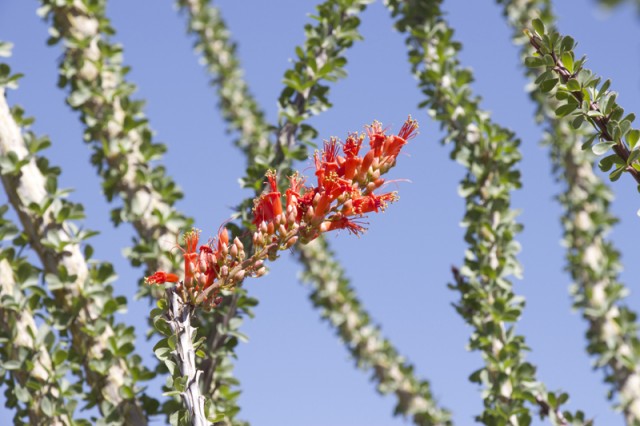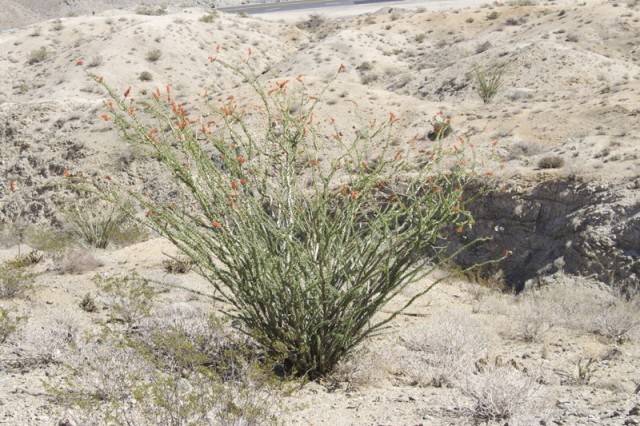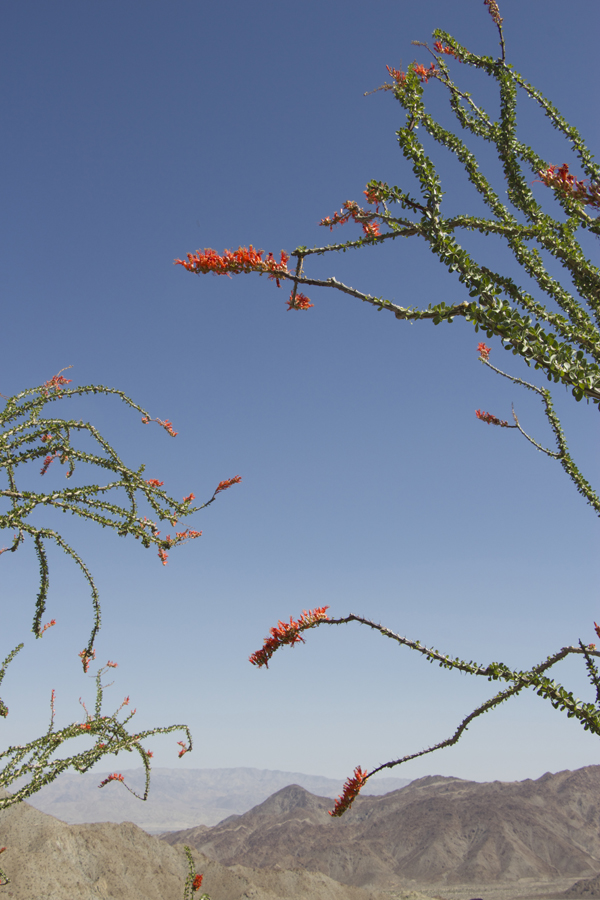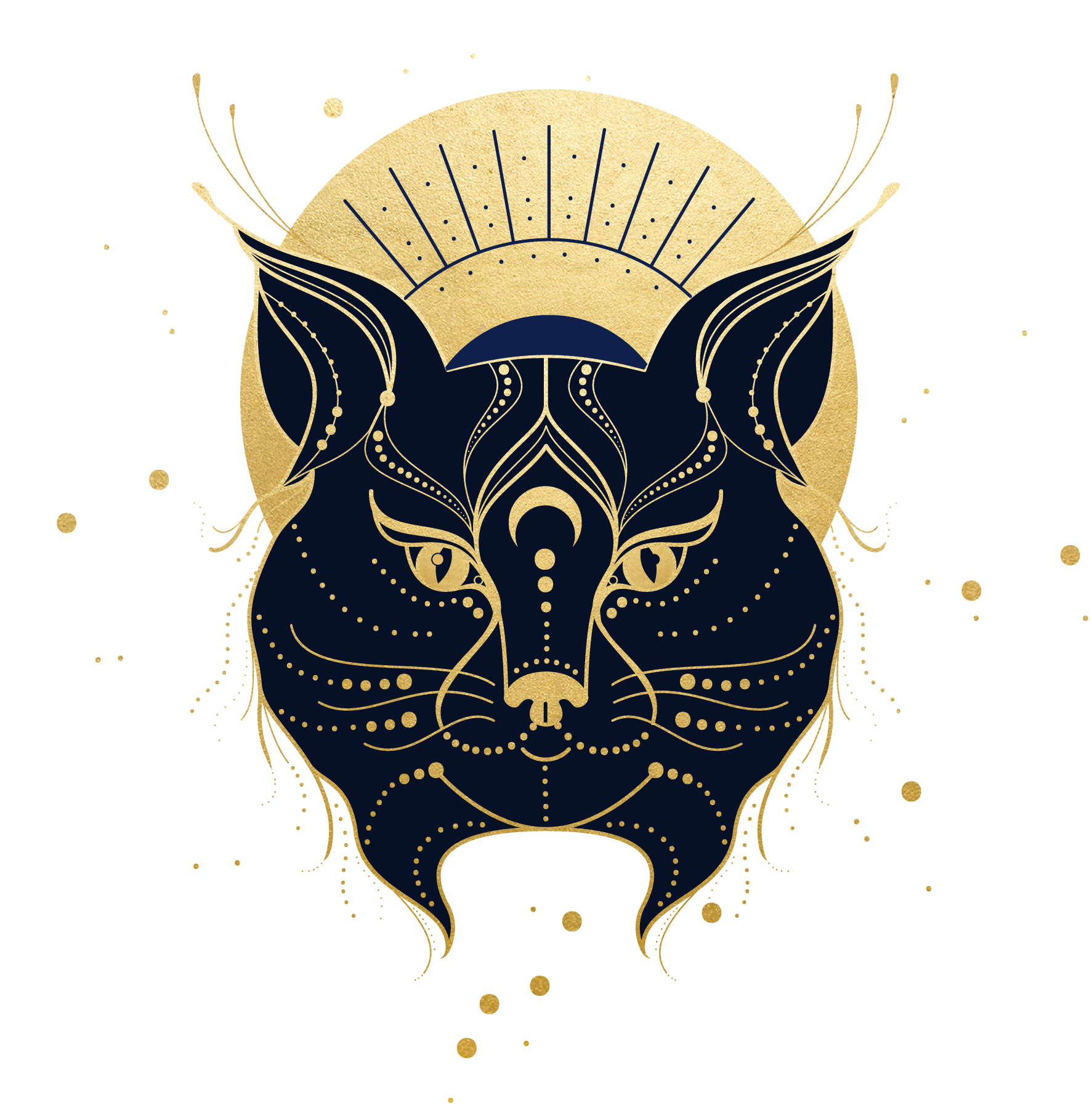On ocotillo
The following is a monograph I wrote for Plant Healer Magazine, on one of my all time favourite herbs, ocotillo. Its one of the four herbs I'll be focusing on in my class next week at the Herbfolk Gathering. I use it so frequently, for such a multitude of issues, and find that the changes it affects in a person are both long-term and profound. These are some of my thoughts on it, organised into monograph format.
If you're interested in formulas containing ocotillo, check out this antimicrobial gut healing formula and this waterways elixir.
 Ocotillo: Fouquieria splendens.
Ocotillo: Fouquieria splendens.
Energetics: warming, drying, moving.
Actions: Liver stimulant, portal stimulant, circulatory stimulant, lymphagogue.
I was hiking with a friend in the desert. It was night time, there was a full moon high in the sky, and we were making our way to a favourite spot of ours to sit and look out over the desert and chat. The wash we were in became a canyon, the cool grey walls climbing higher on either side. The scent of desert lavender and creosote filled the crisp night air. Silence reigned, punctuated by the crunch of desert floor under our feet and the occasional coyote yip in the distance.
Stillness. One of the things that always strikes me about the desert is how still it is. I don’t mean devoid of life, as once you learn to pay attention to small details you notice the life everywhere: a lizard here, a snake camouflaged under a bush there, small pieces of green shooting out between rocks. But deserts are still because they are masters of efficiency. Why move so much when it’s hot? Why waste water when it is scarce? Movement in the desert (as with most things in the desert) is subtle, and interestingly, in such a dry place, this subtle movement is about water. Water conservation, water movement, water storage. Water strikes the surface of the desert in a monsoon and within days the hillsides and washes are ablaze with colour as life springs up from every crack, every crevice. Fluid dynamics, when observed in a dry place, take on an entirely different meaning, as desert plants seize the opportunity to grow as soon as it presents itself.
There’s a narrow path that makes its way up the canyon wall, and at the top, barrel cactus sentinels stand as lookouts. We passed them, carefully, and came out onto a field of ocotillo. We walked in silence, the moon so big and bright that it cast shadows around us, and at one point, when we came into view of one of the biggest and oldest ocotillos in the area, she stopped, grabbed my arm and, staring directly at the big old plant with its bright red blooms ablaze in the night sky, she whispered ‘what. IS. that?’.
But in order to explain why this was such a big deal, I need to explain a little bit about ocotillo itself, and then about my friend’s health history…
Ocotillo, at the core of its action, moves stagnation: specifically the lymph and the blood and indirectly, the interstitial fluids. It affects all the deep fluids of the body. Much like its branches come together and concentrate at its base, ocotillo’s effect tends to go to the root of the problem, and spread out from there. As a result ocotillo’s effects are incredibly broad-reaching.
My friend had been experiencing a multitude of health issues in recent years that had culminated in her having a complete hysterectomy a few weeks previously: dry, flaky skin issues, fibroids, liver deficiency, constipation, varicose veins. At one point she got her period and it never stopped. She bled for 9 months straight, with dull aching pain that progressively got worse and worse. She was seeing a naturopath who had her on about 20 different supplements. She’d had an interesting emotional history, having been raised on a farm in an environment where there wasn’t time to get emotional about things. She learned early on that there was no room for feelings, and so she just started ignoring them. This was especially notable in a tractor accident at age 14 when she severed 2 ligaments in her knee, and lay waiting to be found for hours without crying— she distanced herself from the pain and managed to do so for years afterwards. In discussing it, and other traumatic events as an adult, she sorta shrugs and says ‘there was work to do’. I’ve seen this pattern a lot— people who ignore or shove aside feelings either because they’re not welcome, or because its not safe to express them, and, in the women at least, it often results in some pretty complex combinations of stagnation and excessive bleeding: of holding on and letting go. In my friend’s case, it had been so long, there was so much stagnation, that when she finally did go to a doctor, they diagnosed her with severe endometriosis and couldn’t believe that she was able to function because the pain would’ve levelled most people. My friend, in true form, shrugged and said ‘I had work to do’. The entire time this was happening, I was desperate to give her ocotillo, simply because the underlying pattern was, as far as I was concerned, based on stagnation. She was seeing her naturopath, however, and while I helped her with little things like controlling the bleeding, as far as addressing the underlying patterns went, she wasn’t ready or willing to go there. The doctor recommended a hysterectomy, and after discussing it with her naturopath she decided to go ahead. It was after this, while she was still recovering but able to finally get up and about, that we were on our night hike in the ocotillo field, and it was then that she was completely transfixed by it.
Under the full moon that night, we [carefully] clipped off a single branch of the plant that had called so strongly to her, and carried it back [carefully] to her house to make her a tincture. While the most debilitating surface symptom of the pattern had been removed, the underlying pattern still existed in her body. She’s been taking ocotillo in small doses for a few years now, dealing with the arising emotional issues (and lots of memories she’d forgotten about!). Her digestion has improved significantly, the dry skin is gone, and she has been able to let go of a lot of deep-seated resentments that she didn’t even know were there before. As a result of all this she’s much happier, more fulfilled and moves forward with a purpose in life. Its beautiful to watch, and even more beautiful to see the relationship she’s formed with ocotillo in the process. Where before she was hesitant to make changes in her life, its as if the bond she’s formed with a plant that sends out its spring green leaves the second the opportunity presents itself, she, too has learned to grasp life’s opportunities with a similar ferocity.
Ocotillo was pretty much specific for my friend’s situation: deep stagnation in the pelvis, liver deficiency, and lymphatic stagnation. All of these separate things are affected by ocotillo’s energetic action of gently moving, shifting and dredging stagnation, especially in the fluids of the body. This action can be applied in many areas. Let’s take a look at some of them:
 Pelvic qi blood and lymphatic congestion in men
Pelvic energy, lymphatic and blood stagnation in men often manifests as prostate issues, notably prostatitis, pain, trouble maintaining erections and ejaculation issues (ie. Lack thereof upon orgasm and not as the result of Taoist sexual practices). As with all Western medical diagnoses, there are different causes for prostatitis and I wouldn’t say that ocotillo treats all of them, but if the inflammation is due to stagnation then ocotillo will work quickly and efficiently. I’ve used ocotillo as the primary herb in formulas for prostatitis quite a few times, my most notable case being a man in his early 30’s who had put himself on a self-imposed abstinence and masturbation ban for a year. About six months in, the pain started and by the time I saw him, he’d been on antibiotics and alpha-blockers for 2 years. He’d stopped being able to maintain erections, urinating was hard, and he’d barely slept for months because of the pain. He was convinced that it was a deep-seated infection because the antibiotics helped a tiny bit, but there was no other sign of infection and it looked to me as though the cause of the whole problem was stagnation in his pelvic area due to the stagnation caused by not ejaculating for so long. A combination of ocotillo, alder, bidens and ceanothus resolved the problem entirely within 9 months, though the majority of the pain and inflammation was gone within 6. He still takes gentle lymphatics on a daily basis but is pain free and (last I heard) had an active sex life again.
Pelvic qi blood and lymphatic congestion in men
Pelvic energy, lymphatic and blood stagnation in men often manifests as prostate issues, notably prostatitis, pain, trouble maintaining erections and ejaculation issues (ie. Lack thereof upon orgasm and not as the result of Taoist sexual practices). As with all Western medical diagnoses, there are different causes for prostatitis and I wouldn’t say that ocotillo treats all of them, but if the inflammation is due to stagnation then ocotillo will work quickly and efficiently. I’ve used ocotillo as the primary herb in formulas for prostatitis quite a few times, my most notable case being a man in his early 30’s who had put himself on a self-imposed abstinence and masturbation ban for a year. About six months in, the pain started and by the time I saw him, he’d been on antibiotics and alpha-blockers for 2 years. He’d stopped being able to maintain erections, urinating was hard, and he’d barely slept for months because of the pain. He was convinced that it was a deep-seated infection because the antibiotics helped a tiny bit, but there was no other sign of infection and it looked to me as though the cause of the whole problem was stagnation in his pelvic area due to the stagnation caused by not ejaculating for so long. A combination of ocotillo, alder, bidens and ceanothus resolved the problem entirely within 9 months, though the majority of the pain and inflammation was gone within 6. He still takes gentle lymphatics on a daily basis but is pain free and (last I heard) had an active sex life again.
Pelvic qi, blood and lymphatic congestion in women For women, congestion in the pelvic area usually causes pain and lack of adequate ‘flow’, so it can manifest as things like fibroids, endometriosis, spotting, cramping, and slow-to start or slow-to-finish menses. I’ve used ocotillo in cases ranging from menstrual cramps to severe endometriosis and have seen it effective to some degree or another in all of them. Just like in men with prostate issues, the key here is the stagnation and lack of movement in the blood or energy of the pelvic area, and where movement will help resolve the situation. It combines really well with leonurus cardiaca if there’s slow-to-start menses; with oenothera + leonurus for cramping; and with paeonia in endometriosis. Ginger is also really useful here if there is also cold.
 ‘Liver qi’ stagnation
I see the above patterns a lot in people who have what’s known in Chinese medicine as ‘liver qi stagnation’. Liver qi stagnation, among other things, is tied in with that feeling of frustration mixed with anger mixed with teariness— the closest thing I can liken it to in real life is the feeling you get when stuck in traffic on a hot day when you have somewhere you really want to be. Its stuck-ness, not still-ness, and it causes things like a combination of emotions boiling to the surface all at once, emotional outbursts (crying or anger usually), headaches, an inability to deal with stress, and feeling overwhelmed. If the liver in Chinese medicine is responsible for the free-flowing of energy around the body, then stagnation of that will cause the opposite— the lack of free-flowing energy. It can be caused by repression of emotions, for example, if a person learns early on that expressing their emotions is not allowed or accepted then they will find places to put them that aren’t on the surface, simply because emotions need to go somewhere. Emotions buried deep fester because emotions by nature are fluid, moving, and built to be expressed. They’re a reaction to the environment around us, a filter based on our perceptions, and a way to connect with and communicate with others. An emotion expressed is usually an emotion released. Emotional pile-up = emotions not free flowing, thus, stagnation. Ocotillo dredges up long buried stuff in an incredibly gentle way simply by moving stagnation and stirring up those things that are tucked away for safekeeping. Favourite combinations for the emotionally stuck include ocotillo flower + rosa (especially for stuck frustration), and ocotillo + actaea racemosa (especially for crying fits that happen for no reason).
‘Liver qi’ stagnation
I see the above patterns a lot in people who have what’s known in Chinese medicine as ‘liver qi stagnation’. Liver qi stagnation, among other things, is tied in with that feeling of frustration mixed with anger mixed with teariness— the closest thing I can liken it to in real life is the feeling you get when stuck in traffic on a hot day when you have somewhere you really want to be. Its stuck-ness, not still-ness, and it causes things like a combination of emotions boiling to the surface all at once, emotional outbursts (crying or anger usually), headaches, an inability to deal with stress, and feeling overwhelmed. If the liver in Chinese medicine is responsible for the free-flowing of energy around the body, then stagnation of that will cause the opposite— the lack of free-flowing energy. It can be caused by repression of emotions, for example, if a person learns early on that expressing their emotions is not allowed or accepted then they will find places to put them that aren’t on the surface, simply because emotions need to go somewhere. Emotions buried deep fester because emotions by nature are fluid, moving, and built to be expressed. They’re a reaction to the environment around us, a filter based on our perceptions, and a way to connect with and communicate with others. An emotion expressed is usually an emotion released. Emotional pile-up = emotions not free flowing, thus, stagnation. Ocotillo dredges up long buried stuff in an incredibly gentle way simply by moving stagnation and stirring up those things that are tucked away for safekeeping. Favourite combinations for the emotionally stuck include ocotillo flower + rosa (especially for stuck frustration), and ocotillo + actaea racemosa (especially for crying fits that happen for no reason).
Lymphatic sluggishness/ stagnation Another situation in which liver ‘qi’ stagnates is with stress. Stress causes tension, tension causes restriction of movement of fluids, electrical impulses and such. In more physical terms, when stressed, we breathe more shallowly, and when breathing shallowly the diaphragm doesn’t get nearly enough movement. The movement of the diaphragm actually physically presses on the liver when moving down into the belly upon inhaling; taking a deep breath or two (or five) is really useful in intensely stressful situations.
As energy stagnates, fluids start to stagnate and thus the lymph, being the slowest moving of the body’s fluids, stagnates most easily. For liver qi stagnation/ emotional stagnation combined with lymphatic congestion and signs of liver heat (headaches, red irritated eyes, quick to anger), ocotillo combined with prunella is quite an elegant and effective pairing.
The major lymphatic ducts in the body also lie behind the diaphragm, and the main areas of lymph nodes lie in our soft places— our bellies, breast tissue, inner thighs, under-arms. Lymph stagnation can cause random swellings, bloating, breast tenderness, achy ‘fat’ areas (especially in overweight people, after bingeing on fatty foods I’ve heard people say that their ‘fat aches’ and its often in places where lymph nodes congregate.). Lymphatic stagnation can also be the cause of poor wound healing, frequent low-grade infections, skin and mucosa irritations and infections, food allergies, intestinal bacterial or fungal issues such as ‘candidiasis’ and such. Ocotillo makes a useful and strongly moving addition to a formula that supports lymphatic and liver function, in transporting waste products and fighting infection.
I’ve found the ‘dredging’ effect of ocotillo to sometimes be quite strong and this can cause a rash and sometimes big emotional upheavals too; lowering dosage and adding liver support and (sometimes) supporting elimination functions fixes this quickly. Ocotillo is very useful for any acute situation in which there’s congested lymph glands. For inflamed tonsils, or swollen glands in general, it works well in combination with violet, or red root. I especially like it with salvia apiana for inflamed glands where there’s infection and pain or redness, such as tonsillitis.
Portal venous congestion The portal blood supply that carries blood from the intestines to the liver has a lot of work to do. When the lymphatic system is either overburdened or sluggish as a result not doing its job correctly, the portal veinous system gets overloaded, and starts to back up, much like paperwork on a desk piles up if not dealt with regularly. The back-up of blood in the venous system then moves down in the body causing things like varicose veins, pelvic blood stagnation, and hemorrhoids. The liver ends up so backed up that toxins it’s meant to be processing don’t get processed and they end up circulating in the body’s interstitial fluid. According to Michael Moore, ocotillo helps the lymphatic system take up more dietary fat, leaving the blood supply to the liver less burdened and easing the pressure on the body overall as a result.
Dry skin, acne, eczema, constipation, cold extremities all issues that are potentially caused by this pattern of lymphatic/ portal congestion and greatly aided by the addition of ocotillo to a formula. I also associate cystic acne with this pattern (especially if there are butt zits at the same time), and I often use ocotillo with alder and mahonia or myrica in these instances.
Immune system Because of its usefulness in moving lymph, as an adjunct to other immune-stimulant herbs, ocotillo balances the overall formula in helping the lymphatic system remove the waste as a product of increased immune activity. This is broadly applicable— from fighting a flu virus to dealing with stomach issues after eating food of questionable origins. The immune system does its thing, and the lymphatic system moves away the waste. One of the first signs of the immune system overworking is swollen lymph nodes, be it in the throat, groin, stomach. People with food intolerances often have swollen lymph nodes over the small intestine (which makes sense as they are working very hard there). Ocotillo isn’t a substitute for removing the source of the problem (be it lack of sleep or food intolerance) but it does help with the body’s management of the problem.
Other notable things: Externally ocotillo can be really useful in salve or oil format for bruising and cramping (or just tincture applied on the skin). Its also very useful for coughs where there’s lymphatic congestion around the lungs and pain as a result.
Due to its small growing range, that ocotillo isn’t well known commercially is understandable (and its population couldn’t supply the demand were it to become popular in commerce). However for those of us who live within its growing range, or have friends who live within its growing range, it is an unbelievably useful plant, one that I personally would never want to be without, not for its medicinal properties (which as we’ve discussed, are broad-reaching indeed), nor the way its torch-like flowers light up the hillsides in the spring, or for what it has to teach us all about seizing the moment— something one can only really do if one has let go of the past.
 Where to find it:
Ocotillo grows in the Sonoran deserts, from California to New Mexico, and is usually pretty prolific within its growing range.
Where to find it:
Ocotillo grows in the Sonoran deserts, from California to New Mexico, and is usually pretty prolific within its growing range.
Parts used: Bark, flowers, and traditionally, according to various ethnobotanical texts, the root, though I personally have no experience with using the root.
While the bark is the most commonly used part, I find the flowers very nice indeed in tincture or elixir, and while much gentler than the bark they are still very effective especially when addressing emotional issues.
How to gather it: Usually around the outside of the plant there will be some branches that have been cut off somewhat. I find one of those that is bright green with leaf, wearing heavy gloves, with a pair of proper clippers, clip it down towards the base.
Things to take into consideration: While ocotillo might be quite prolific in the areas it does grow, its growing range is small— limited to areas of the Southwest deserts. Not only is its growing range small, but with the droughts in recent years that are only getting worse, its growing areas are becoming dryer with every year.
Processing: Pounding the cut branch between two rocks is the easiest and most effective way to remove the outer parts. The bark is quite thick, and if taken in the spring it usually separates from the hard woody center quite easily.
Dosage: Bark tincture- 10-30 drops, 4x a day. Flower tincture- drop doses work nicely.
Cautions and contraindications: Due to the heavy movement in the pelvis, its contraindicated in pregnancy. It’s also contraindicated with thrombosis and lymph-immune pathologies.
Sources: Kiva Rose’s most excellent monograph in Spring 2013 issue of Plant Healer Magazine, and private conversations Darcey Blue’s monograph Medicinal Plants of the Desert and Canyon West by Michael Moore ’Tinctures in Clinical Practice’ by Michael Moore Chumash Ethnobotany: Plant Knowledge Among the Chumash People of Southern California by Jan Timbrook
